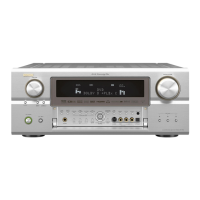ENGLISH
ENGLISH
5
• This section contains the basic steps necessary to configure the AVC-A11XV according to your listening room
environment and the source equipment and loudspeakers you are using.
• For optimum performance, we recommend using the Auto Setup function.
• If you wish, you can set the various settings manually without using Auto Setup ( page 53 ~ 57).
Placing the speakers
Connecting the speakers
Connecting a monitor
and a DVD player
Starting the Auto Setup
Playing a DVD
with surround sound
Connecting a microphone
Preliminary measurement
The measurement of the speakers
in the main listening position
The measurement of the speakers
in the 2nd to 8th listening position
Check of the measurement result
1) Measuring the background noise (noise in the room)
2) Determining whether or not speakers are connected
3) Checking the polarities of the speakers
1) Speaker Configuration
2) Delay Time
3) Channel Level
4) Crossover Frequency
5) Room EQ
Easy to setup flow
Auto setup flow
Store the measurement result in the memory
Speaker system layout
2 Basic system layout (For a THX Ultra2 system)
The following is an example of the basic layout for a system consisting of eight speaker systems and a television
monitor:
Subwoofer Center speaker system
Surround speaker systems
Surround back speaker systems
Front speaker systems
Set these at the sides of the TV or
screen with their front surfaces as flush
with the front of the screen as possible.
Two surround back speakers are required to use the THX Ultra2 Cinema,THX Music mode and THX Games mode.
Set the surround back speakers so that the distance to the listening position is the same for both the left and
right speakers. It is also recommended that the deviations of the distance from the listening position to L and R
channel speakers (front left (FL) and front right (FR), surround left (SL) and surround right (SR), surround back left
(SBL) and surround back right (SBR)) is less than 60 cm (2 ft).
With the AVC-A11XV it is also possible to use the surround speaker selector function to choose the best layout
for a variety of sources and surround modes.
2 Surround speaker selector function
This function makes it possible to achieve the optimum sound fields for different sources by switching
between two systems of surround speakers (A and B). The settings of the different speakers (A only, B only
or A+B) are stored in the memory for the different surround modes, so they are set automatically when the
surround mode is selected.

